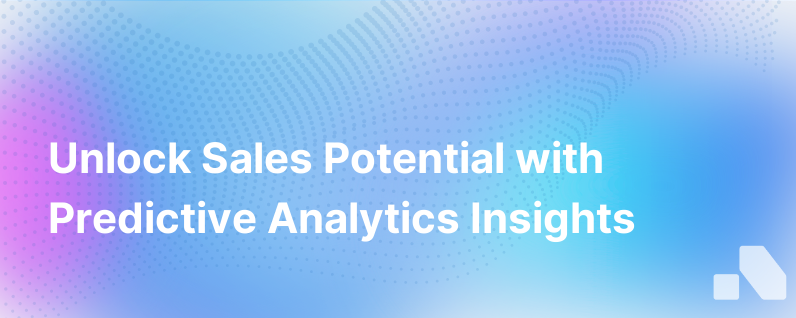
In our data-driven world, it is not the amount of data that sets companies apart—it’s how they leverage it. Predictive analytics stands out as a beacon of strategic power, elevating businesses by providing foresight into what might happen in the future. In this comprehensive exploration, we'll dive into the depths of predictive analytics, illuminating its underlying mechanics, real-world applications, and key benefits.
Understanding Predictive Analytics
Predictive analytics refers to the use of historical data, statistical algorithms, and machine learning techniques to identify the likelihood of future outcomes. This practice is all about making informed, data-driven predictions, enabling businesses to anticipate trends, behaviors, and activities before they happen.
How Does Predictive Analytics Work?
The process begins with data collection. Various sources contribute, including CRM systems, web traffic, social media, industry forecasts, and more. This dataset undergoes preprocessing to clean and structure it for analysis.
Next, data scientists deploy statistical algorithms and machine learning models. These models are trained on historical data, learning patterns and associations that influence outcomes. Once refined, models apply these insights to current data to forecast future events with a significant degree of accuracy.
Key Components of Predictive Analytics
Predictive modeling is built on key statistical methods, including regression analysis, time series analysis, decision trees, clustering, and neural networks. Let’s take a closer glance:
- Regression Analysis: Correlates independent variables to dependent outcomes, such as how product pricing impacts sales volume.
- Time Series Analysis: Examines data points collected or recorded at specific time intervals to predict future values in the same series.
- Decision Trees: Use branching methodology to illustrate every possible outcome of a decision, aiding in choosing the best course of action.
- Clustering: Groups data points so that sets within a cluster have greater similarity, which can be useful for market segmentation.
- Neural Networks: A subset of machine learning that mimics the human brain's connectivity to analyze complex patterns and relationships.
Real-World Applications of Predictive Analytics
Businesses across sectors leverage predictive analytics, each with distinct objectives:
- Retail: Forecasting trends, managing inventory, personalizing marketing, and optimizing the retail experience.
- Finance: Predicting stock market trends, assessing credit risk, detecting fraudulent transactions, and advising wealth management strategies.
- Healthcare: Anticipating disease outbreaks, personalizing patient care, improving diagnostic accuracy, and managing healthcare costs.
- Manufacturing: Planning maintenance activities, improving product quality, optimizing supply chains, and predicting equipment failures.
The pervasive nature of predictive analytics underscores its versatility and the breadth of insight it offers to businesses ready to harness its potential.
The Benefits of Predictive Analytics
Organizations utilizing predictive analytics can unlock a multitude of advantages:
- Informed Decision Making: Reduces guesswork by grounding decisions in data-driven projections.
- Risk Reduction: Helps in identifying and mitigating potential risks ahead of time.
- Increased Efficiency: Enhances operations through better resource allocation and process optimization.
- Revenue Growth: Opens new opportunities for sales and monetization by predicting market movements.
- Customer Experience Improvement: Tailors experiences through insights into customer behaviors and preferences.
Predictive Analytics in the B2B Arena
For B2B enterprises, predictive analytics is particularly potent. It can forecast customer churn, predict purchase behaviors, and fuel lead scoring systems. By identifying prospects most likely to convert, sales teams can prioritize their pipeline, optimizing sales strategies and boosting the bottom line.
Challenges and Considerations
While the advantages are manifold, predictive analytics is not without challenges. Data privacy concerns, the need for clean and comprehensive datasets, and the integration of predictive models into existing workflows require attention. Model accuracy is paramount—overfitted models might make accurate predictions for historical data but fail with new information. Ongoing model assessment and adjustment are essential to maintain predictive accuracy.
The Future of Predictive Analytics
The future of predictive analytics is promising and poised to become more intertwined with decision-making processes. As artificial intelligence and machine learning evolve, predictive models will become more sophisticated and their insights more nuanced. This ongoing maturation will bolster predictive analytics as an indispensable element of modern business strategy.
The Role of Aomni in Predictive Analytics
In a landscape brimming with data and competitive urgency, platforms like Aomni step in to streamline predictive analytics for B2B sales. By leveraging artificial intelligence, Aomni sifts through vast data lakes, extracting actionable predictive insights with minimal effort. It empowers sales teams with foresight into accounts, market movements, and customer needs, amplifying their strategic approach to sales.
Bringing Predictive Analytics Into Your Business
Implementing predictive analytics calls for a structured approach. It requires investment in data infrastructure, skilled personnel, and a willingness to integrate predictive insights into strategic planning. Yet, the value it delivers—a compass pointing toward future opportunities—makes the leap not just sensible, but essential.
In a data-laden world where anticipating the next turn can place you miles ahead, predictive analytics is the key to unlocking tomorrow's insights today. By blending historical data with advanced analytics, businesses can stride confidently into the future, making informed decisions that fuel growth, innovation, and competitive advantage.
By embracing predictive analytics, companies can foster a culture of forward-thinking that leverages data as its cornerstone, and with the assistance of platforms like Aomni, the transformative power of predictive analytics is but a few clicks away.
Ready to start understanding your future market and customer behaviors now? See how Aomni can empower your sales strategy with predictive analytics.